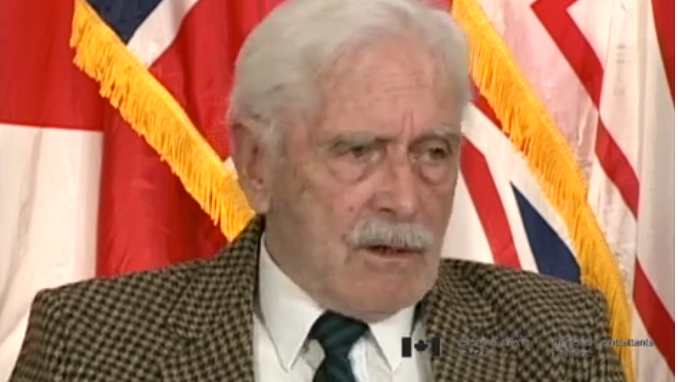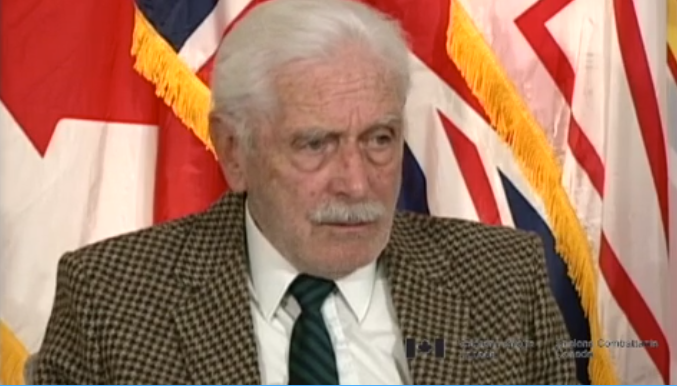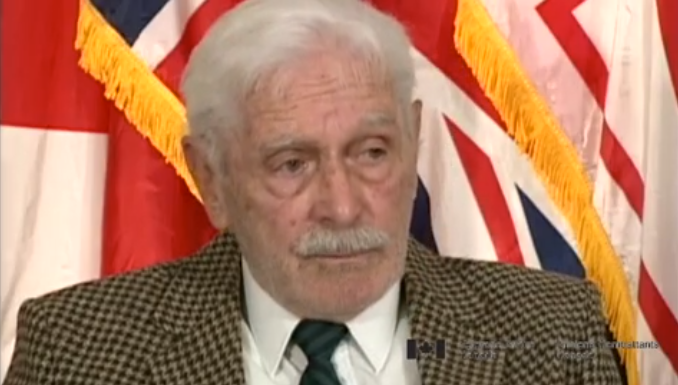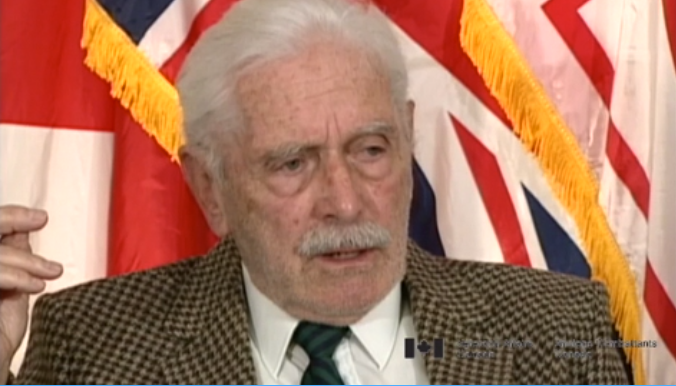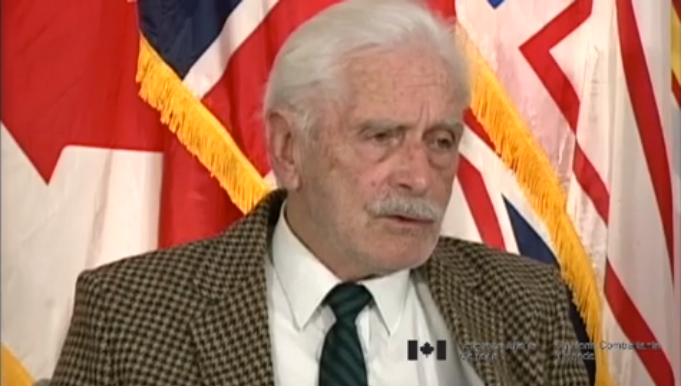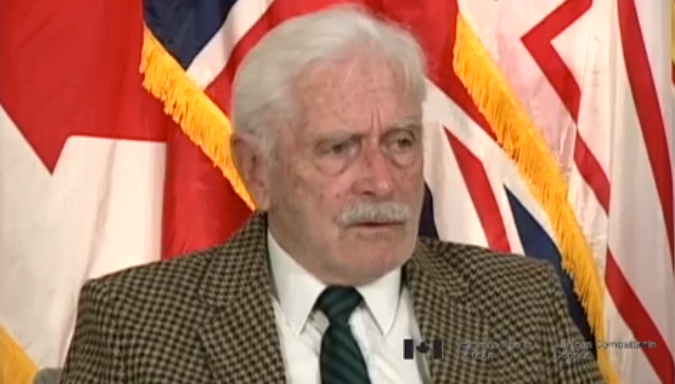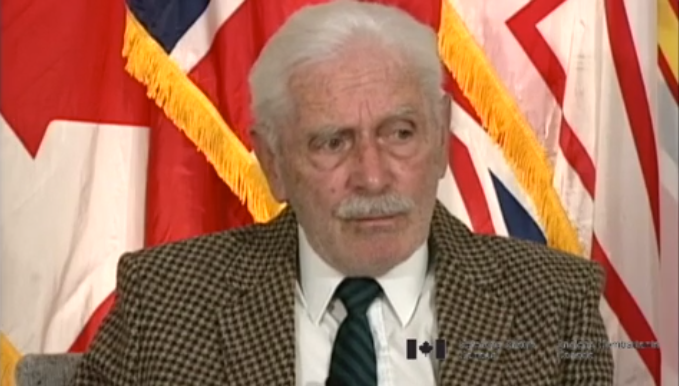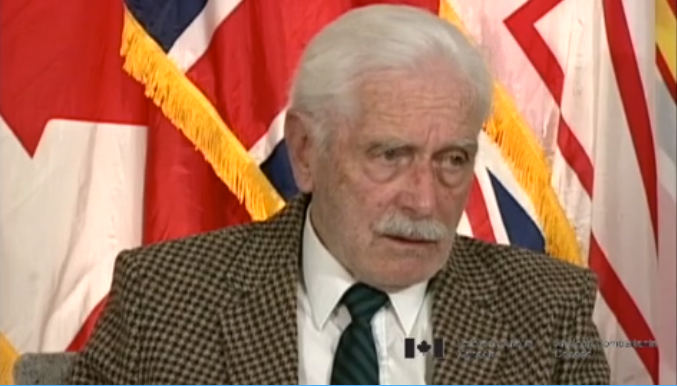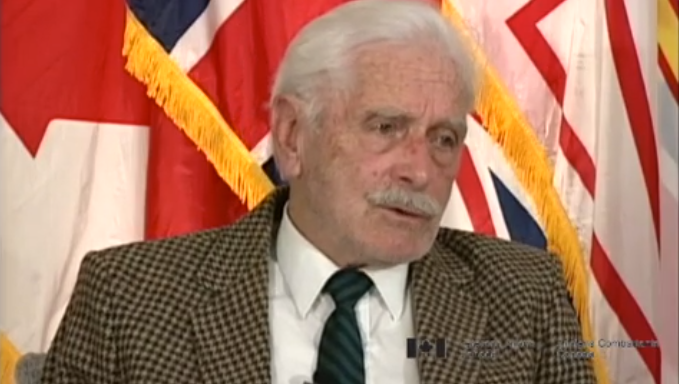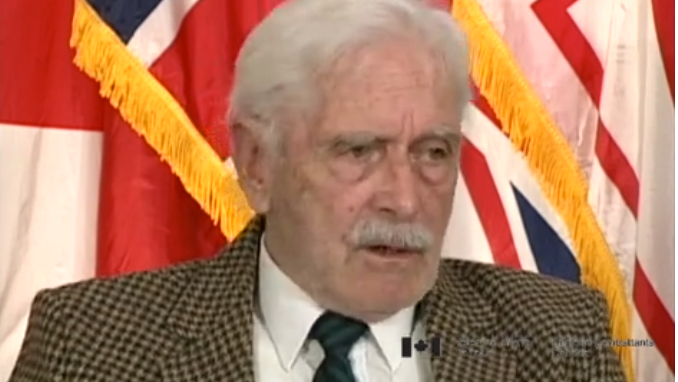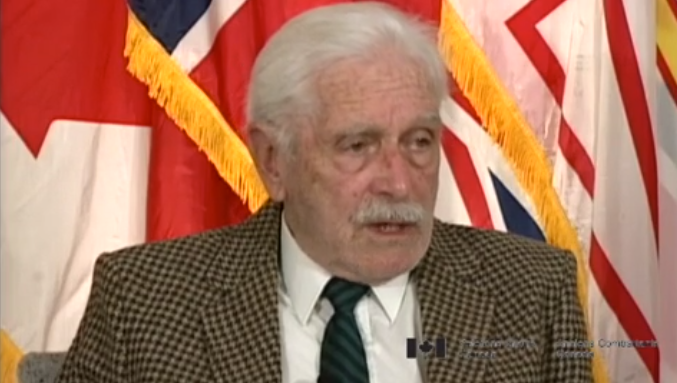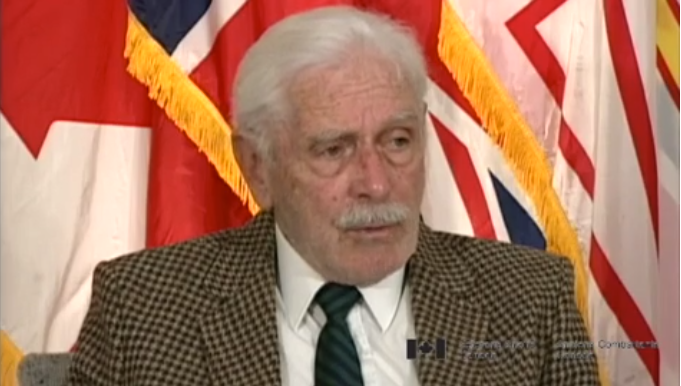The butcher died and had to be buried the
same day and what you do at sea,
you sew them up in canvas.
And we had onboard the ship an old fellow
named Alec Cohagen and he had been
a sail maker onboard sailing ships.
Around the horn sailing ships and he went
to the boss and he said, “Do we got anybody
amongst your crew know how to sew canvas.”
Anyhow, they asked me, I said,
“Yes, I know how to sew canvas.”
Go up and see the, go up and see Alec.
So I went up and here was the old butcher
straightened out and before he started,
he use to stutter. He said, “Now,”
he said, “we get five shillings and a bottle
of rum.” He said, “I'll have the rum and
you have the five shillings!”
I said, “That's fine, suits me!”
So we straightened out the poor old,
the body on the, we had two fire bars there.
These are the metal things come out of
the engine room furnace and anyhow
we put it down and we lashed them on,
we lashed poor old butcher onto
the fire bars and took the canvas,
turned it over, turned it over and
down at the bottom, old Alec I'd had
never done it before, but Alec was
showing me what to do.
He drinking rum and on the bottom he said,
“you turn it up this way and that way and
that gives you kind of a “V', you see”.
And he said, so I was sewing away and
sewing and when he got up the head,
did same thing, this “V, you turn it in so it
becomes a “V. So I was going right to it
and he said, “Don't forget, the last stitch.”
“What?” “Through his nose!” “What?”
“The last stitch has got to go through his nose.”
I said, “Jeez, Alec.” I said, “I can't do that.”
Jeez, he give me a push,
that's why they sent me for the rum.
He pushed me out of the way,
he called me a damn fool or something
or other and then, crunch.
You built up, you took two or three life rafts
and you built them up so that they'd be
the level of the rail and you put the
corpse on the hedge board on top,
on top of the rafts.
You put the hedge board and you covered,
you covered it with a British flag, red anson.
And I was there, and I was at one end of the
hedge board and the Bolson was at the
other end and the captain reads the
committal service and he holds up his hand
and the officer on he watch stops the engine,
stops the propeller and when you tip him up
and away goes the body.
And the Bolson says,
“And hold onto that bloody flag,
don't let the flag go!!”
So that was a burial at sea.
We had a number of burials after that
and it was the same,
pretty well the same routine.



